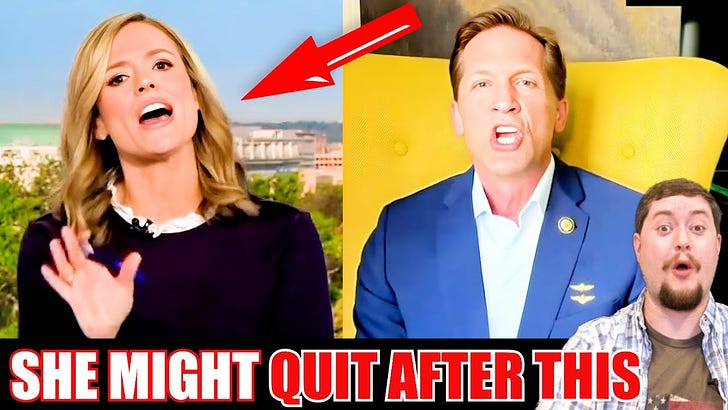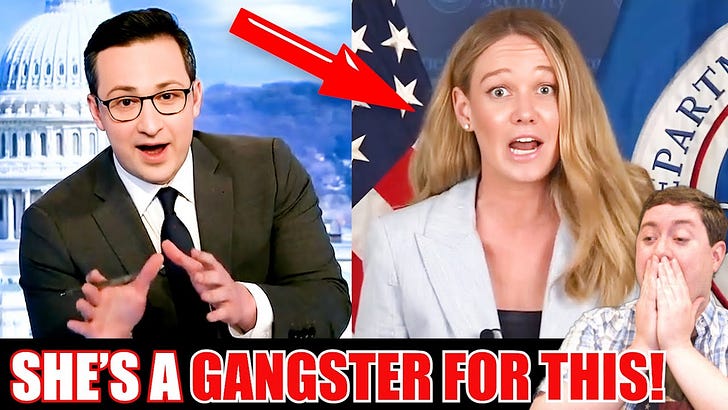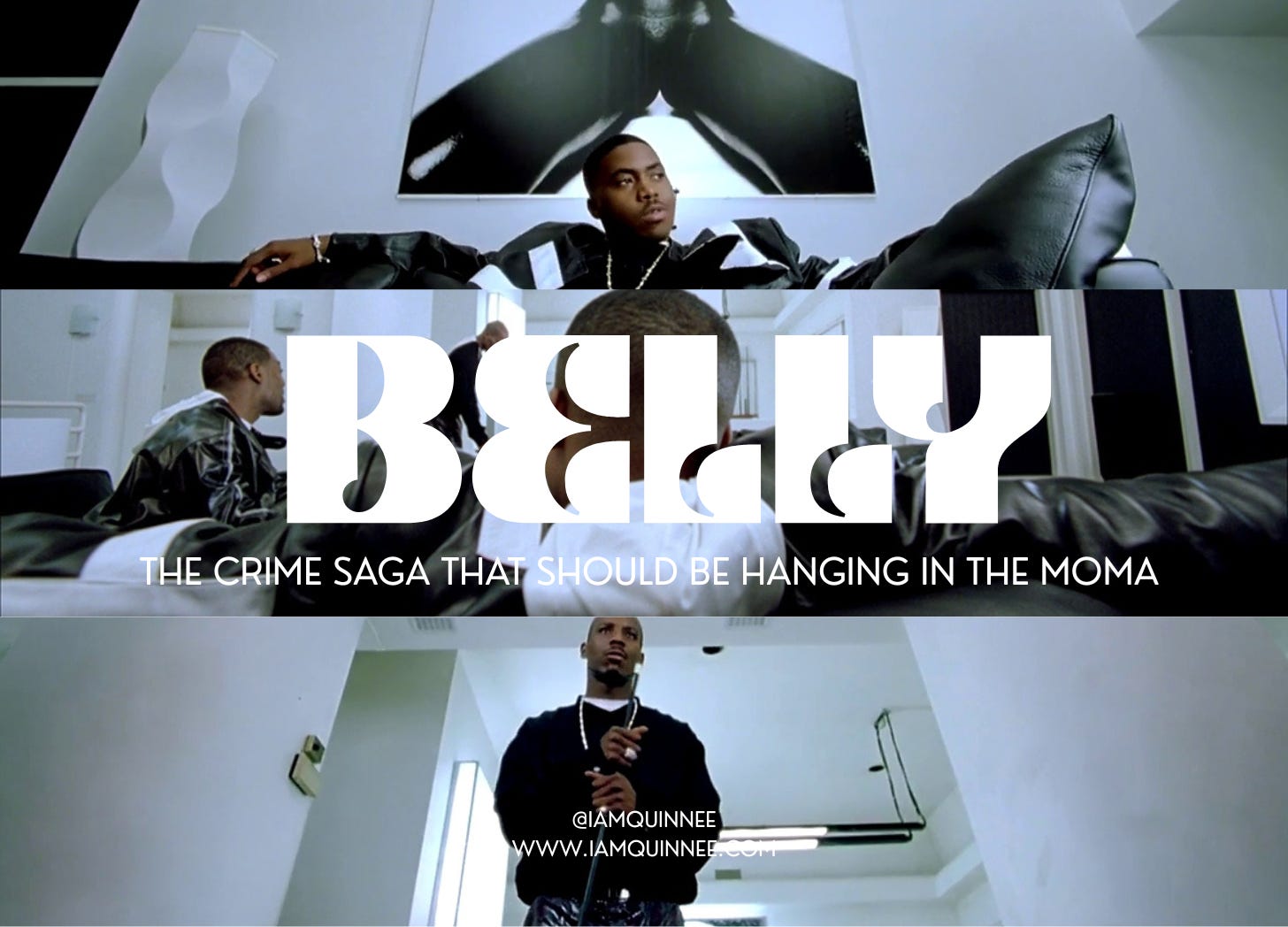
Abstract
This essay examines Belly (1998), written and directed by Hype Williams, through the lens of visual art, auteur theory, and urban mythology. Often criticized for its narrative shortcomings yet celebrated for its lush cinematography and music video aesthetics, Belly is positioned here as a pivotal work in Black visual culture that bridges the worlds of cinema, photography, and hip-hop.
Introduction
Hype Williams’ Belly remains a singular entry in late-20th-century American cinema, existing at the intersection of music video iconography, urban crime narrative, and painterly visual expression. As Williams’ only feature-length film, Belly is both a showcase of his directorial prowess and a meditation on Black identity within the stylized world of street mythology. While the film has long been dismissed by some critics as “style over substance,” this essay argues that its visual language is its substance.
Visual Grammar and Music Video Aesthetics
The film’s DNA is undeniably rooted in Williams’ extensive background as a music video auteur. From his seminal work with Busta Rhymes (Put Your Hands Where My Eyes Could See, 1997) to Missy Elliott (The Rain, 1997), Williams honed a hyper-stylized visual lexicon marked by wide-angle lenses, saturated color palettes, and rhythmic editing. Belly imports these techniques wholesale, yet amplifies them into a narrative space.
The ultraviolet-lit opening heist sequence is emblematic of this aesthetic, operating more like a kinetic installation than a conventional scene. Bathed in cobalt and punctuated by spectral whites, the mise-en-scène evokes the tonal contrasts found in Gordon Parks’ photography—where the brutality of American urban life is rendered with haunting beauty.[1] Williams’ use of chiaroscuro throughout the film furthers this painterly approach, draping his characters in darkness only to reveal them through precise slivers of light. This interplay between light and void echoes Caravaggio’s tenebrism but within the context of 1990s hip-hop culture.
Mise-en-Scène and Urban Mythology
Belly’s mise-en-scène—consisting of luxury streetwear, minimalist interiors, and religious iconography—grounds the film in the aesthetics of late-90s urban life while simultaneously elevating it into a mythopoetic space. The oversized leather jackets, Versace sunglasses, and Hype Williams’ signature fisheye lens transform DMX and Nas into larger-than-life figures, urban knights navigating a morally ambiguous landscape. In this respect, Williams constructs Belly less as a crime narrative and more as a modern parable of Black survival and ascension.
Fragmented Narrative and Surreal Rhythms
Critics have long noted the film’s loose narrative structure, where linear storytelling gives way to music-driven montages and impressionistic edits. However, this fragmentation is not a flaw but a formal strategy, one that prioritizes affect over plot. Williams disrupts the viewer’s expectations of the gangster genre—drawing comparisons not to Scorsese but to the rhythmic dissociation of Wong Kar-wai’s Fallen Angels (1995).[2] Slow-motion sequences and ethereal dissolves function less as stylistic excess and more as manifestations of the characters’ internalized trauma and longing.
Cultural Commentary and Diasporic Layers
Beneath its surface, Belly is also a commentary on the spiritual dissonance within Black urban communities at the close of the 20th century. The film interrogates themes of materialism, systemic disenfranchisement, and the tension between earthly desires and transcendence. Sincere’s search for purpose through spiritual awakening parallels Tommy’s arc of reluctant self-reflection, ultimately leading to a climax rooted in non-violence and personal redemption.
The detour to Jamaica further embeds diasporic consciousness into the narrative, introducing Rastafarian elements that suggest an alternate path to Black liberation—one outside Western capitalist frameworks. In doing so, Williams quietly extends the film’s thematic resonance beyond American borders, gesturing toward a global Black identity.
Soundtrack as Emotional Architecture
The soundtrack, featuring DMX, Jay-Z, and reggae artists like Barrington Levy, is not mere accompaniment but structural to the film’s immersive quality. Williams curates a sonic palette that mirrors the tonal shifts within the visual storytelling, turning club scenes into audiovisual reveries. This marriage of sound and image collapses the boundaries between cinema and the hip-hop music video, situating Belly in a lineage of experimental Black media forms.
Auteurship and Legacy
In auteurist terms, Belly stands as a crystallization of Williams’ visual philosophy. Like Spike Lee’s Do the Right Thing (1989) or Nicolas Winding Refn’s Drive (2011), Belly is a filmmaker’s personal imprint etched into every frame. Williams’ commitment to visual maximalism—through bold lighting schemes, kinetic camera work, and stylized blocking—cements Belly as both a cinematic and fine-art artifact.
More than 25 years after its release, Belly’s influence is palpable across visual culture. It echoes in the works of contemporary filmmakers like Barry Jenkins (Moonlight, 2016), as well as in the visual rhetoric of modern streetwear campaigns, music videos, and brand storytelling within Black creative spaces.[3] Williams’ mythologization of urban spaces has become a visual grammar all its own.
Belly demands to be read as both film and visual art—a “moving canvas” where narrative is secondary to atmosphere, mood, and allegory. Its critical reevaluation, especially in the context of Black artistic production, is long overdue. As both a document of 90s hip-hop aesthetics and a visual meditation on Black urban existence, Belly occupies a rarefied space within contemporary visual studies.
References:
[1] Parks, Gordon. A Harlem Family 1967. The Gordon Parks Foundation, 1967.
[2] Bordwell, David, and Thompson, Kristin. Film Art: An Introduction. 12th ed., McGraw-Hill, 2019.
[3] Mercer, Kobena. Welcome to the Jungle: New Positions in Black Cultural Studies. Routledge, 1994.









































